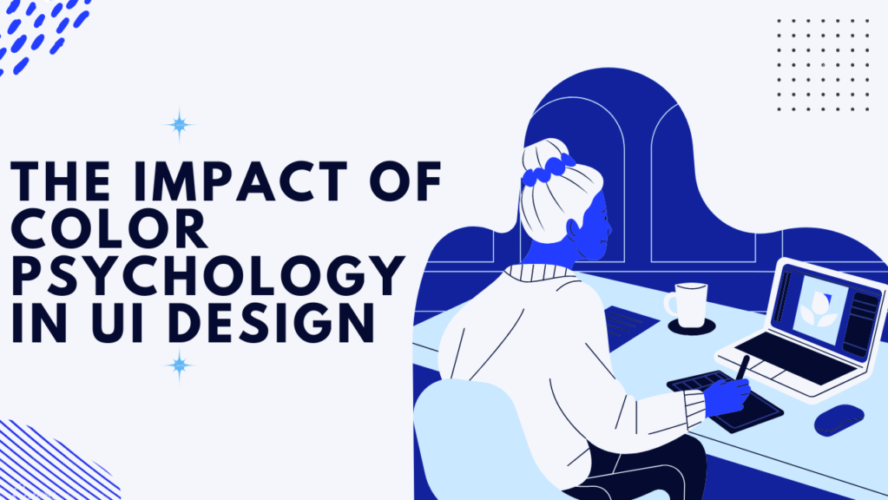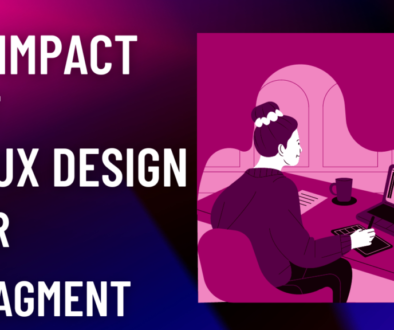The Impact of Color Psychology in UI Design
In the dynamic world of User Interface (UI) and User Experience (UX) design, creating visually appealing and user-friendly interfaces is paramount. One often underestimated yet influential element in achieving this is color psychology. Colors play a significant role in shaping user perceptions, emotions, and behaviors, making them a crucial aspect of UI and UX design services. In this blog post, we will explore the impact of color psychology in UI design, emphasizing its role in enhancing the overall user experience.
Understanding Color Psychology
Color psychology is the study of how colors affect human emotions, attitudes, and behaviors. In the context of UI design, it involves strategically selecting and implementing colors to evoke specific user responses and enhance usability. By understanding the psychological associations of different colors, designers can create interfaces that resonate with users on a deeper level.
Establishing a Connection with Users
The choice of colors in UI design is not arbitrary; it is a deliberate attempt to establish a connection with users. For instance, warm colors like reds and oranges are often associated with energy, passion, and urgency. Implementing these colors strategically in call-to-action buttons can encourage users to take desired actions, such as making a purchase or signing up for a service, thus contributing to the overall UX.Conversely, cool colors like blues and greens are linked to calmness, trust, and reliability. These hues are commonly used in UI design to create a sense of security and professionalism. Financial and healthcare applications, for instance, often utilize cool colors to instill confidence in users and convey a sense of reliability.
Improving Readability and Accessibility
Color choices in UI design extend beyond aesthetics; they significantly impact readability and accessibility. Proper contrast between text and background colors is crucial for ensuring that information is easily legible. Designers need to consider color combinations that are visually appealing while adhering to accessibility standards, making the interface usable for individuals with diverse visual abilities.UX design services, therefore, emphasize the importance of creating interfaces that are not only visually stunning but also inclusive and accessible to a broad user base. By considering color psychology in the design process, designers can strike a balance between aesthetics and functionality.
Enhancing Brand Identity
Colors play a pivotal role in establishing and reinforcing brand identity. Consistency in color usage across a brand’s UI elements fosters brand recognition and strengthens the connection between the brand and its users. When users encounter a familiar color scheme, they are more likely to associate it with a specific brand, creating a memorable and cohesive user experience.UX design services that prioritize brand consistency ensure that color choices align with the brand’s personality, values, and target audience. This comprehensive approach contributes to a seamless and recognizable brand presence in the digital space.
Adapting to Cultural and Contextual Differences
Color associations can vary across cultures, and understanding these nuances is vital for global UI design. What may convey a positive message in one culture could have a completely different connotation in another. Successful UX design services take cultural diversity into account, ensuring that color choices resonate positively with users from different backgrounds.
The Evolving Role of Color Trends
Just as design trends evolve, so do color trends in UI design. Staying abreast of current color trends is essential for designers aiming to create modern and visually appealing interfaces. Trends can be influenced by cultural shifts, technological advancements, or even global events. Incorporating trendy colors not only keeps the design fresh and relevant but also signals to users that the product or service is up-to-date and forward-thinking.Furthermore, color trends can be leveraged strategically to differentiate a product or service from competitors. Designers offering UI and UX design services should be adept at balancing timeless color choices with contemporary trends, ensuring that the design remains relevant over time while still capturing the audience’s attention.
Responsive Design and Color Adaptability
With the proliferation of various devices and screen sizes, responsive UI and UX design services. Color plays a crucial role in ensuring a consistent and enjoyable experience across different devices. Designers must consider how colors may appear on various screens and in different lighting conditions, optimizing the palette for adaptability.The use of color gradients, for instance, can enhance visual interest while adapting seamlessly to different screen sizes.
Conducting User Testing for Color Validation
While color psychology provides valuable insights, user testing remains an integral part of the design process. Designers should conduct usability testing to gather feedback on color choices directly from the target audience. This iterative approach allows for adjustments based on real user experiences, ensuring that the final design resonates effectively with the intended users.User testing can reveal unexpected reactions to certain colors or uncover accessibility issues that might have been overlooked. By incorporating user feedback, UI and UX design services can refine the color palette to align more closely with user preferences and expectations, ultimately leading to a more successful and user-friendly product.
Incorporating Microinteractions for Delightful Experiences
Microinteractions, subtle animations or visual responses to user actions, are becoming increasingly popular in UI design. Colors play a pivotal role in enhancing these microinteractions, providing visual cues and feedback to users. Whether it’s a change in button color upon hover or a gentle color transition during a successful action, these microinteractions contribute to a more engaging and delightful user experience.
In the digital world UI and UX design services, the influence of color psychology extends far beyond mere aesthetics. From staying on top of current color trends to ensuring adaptability in the future of web design and incorporating user testing for validation, designers must embrace a holistic approach to color selection. The nuanced use of color, in conjunction with other design principles, contributes to creating interfaces that are not only visually stunning but also functionally effective and user-centric. As technology and design trends continue to evolve, the role of color in UI design will undoubtedly remain a dynamic and critical element in shaping exceptional user experiences.






